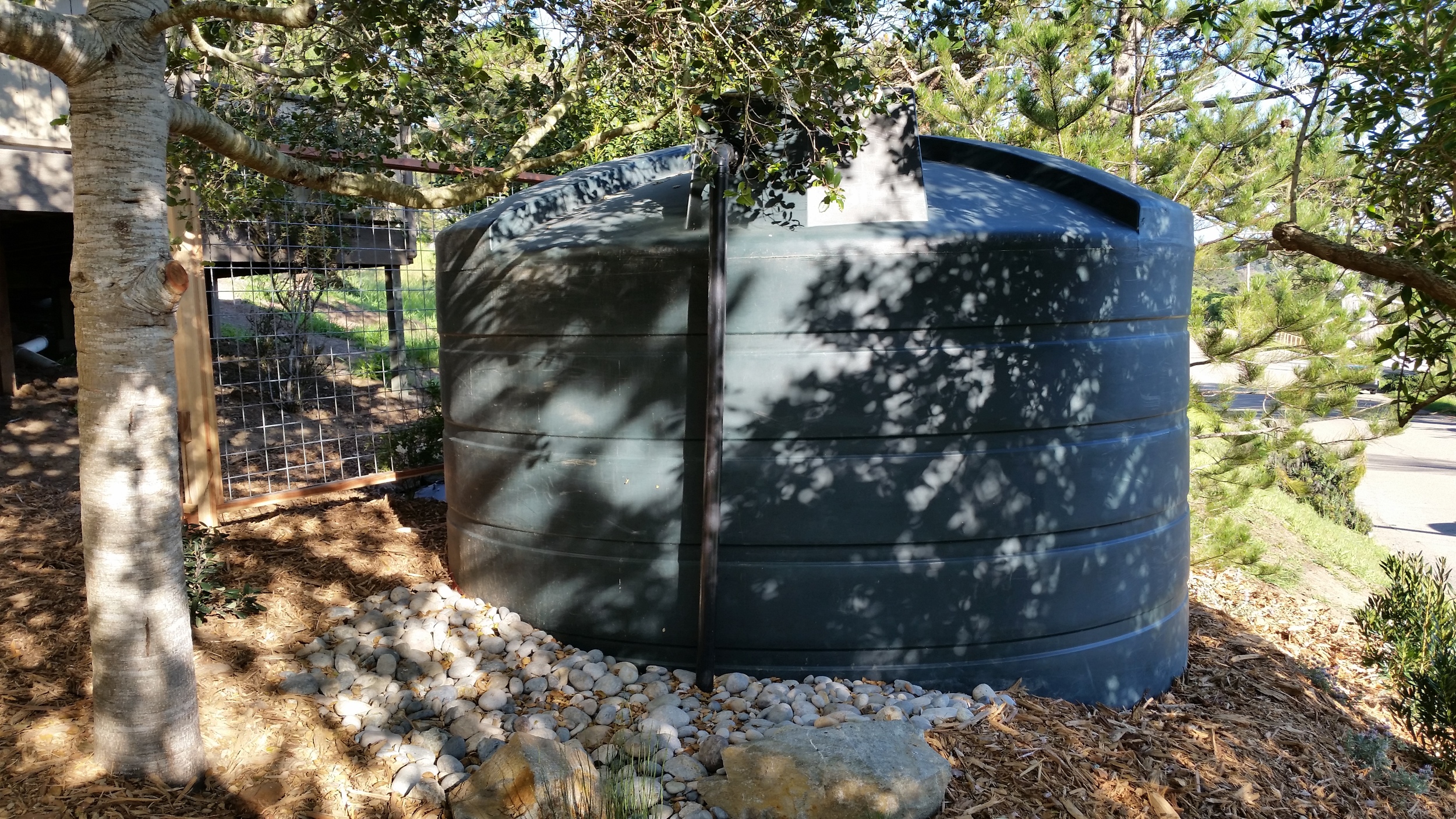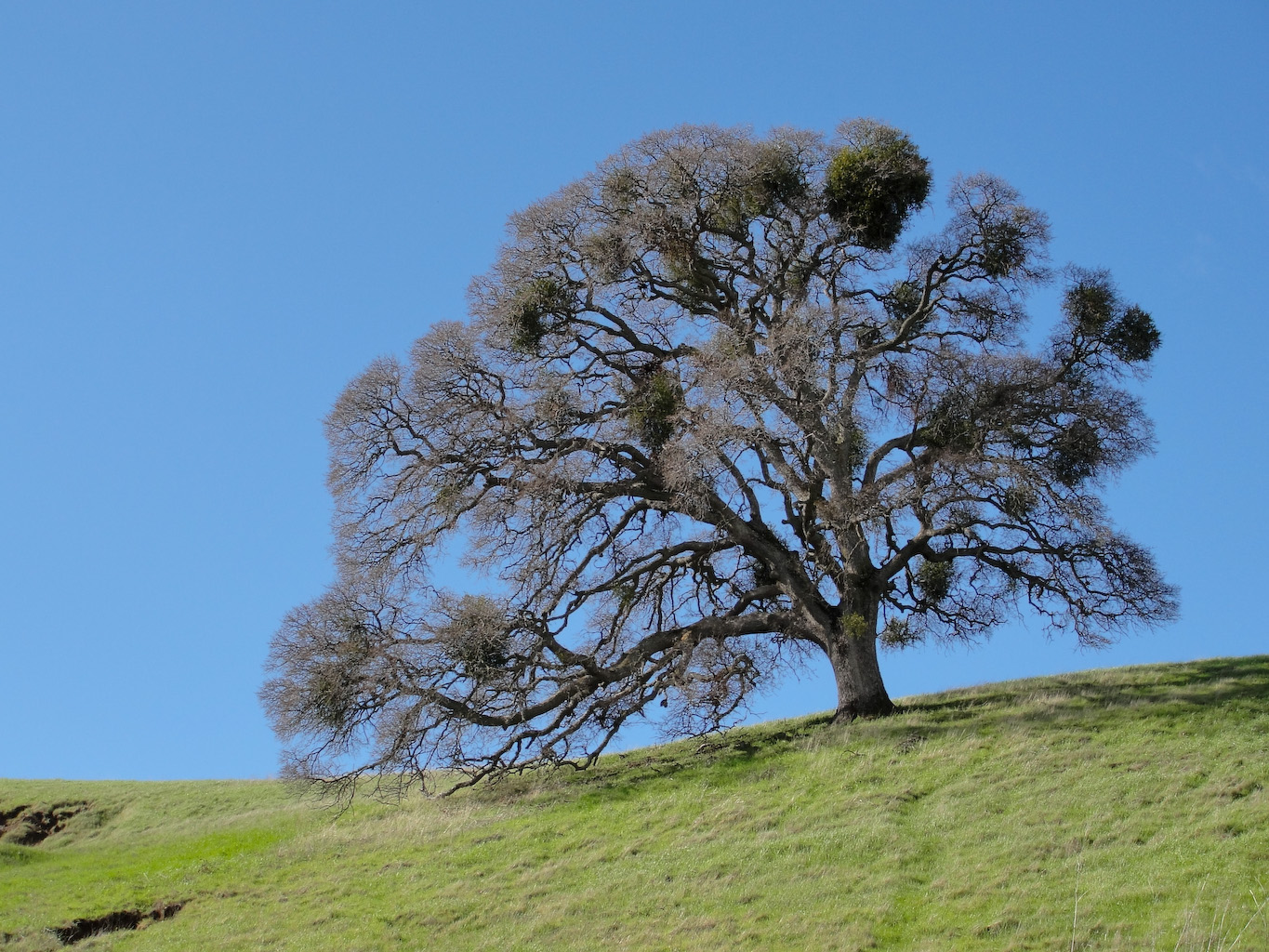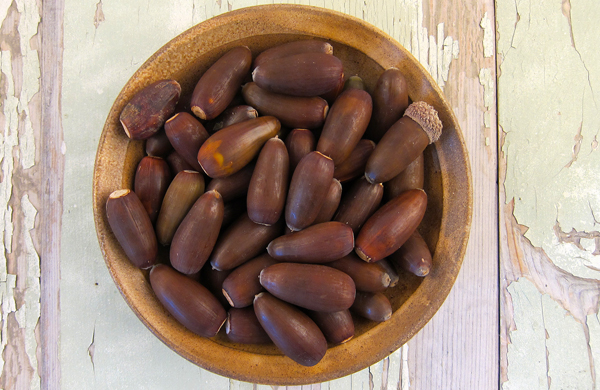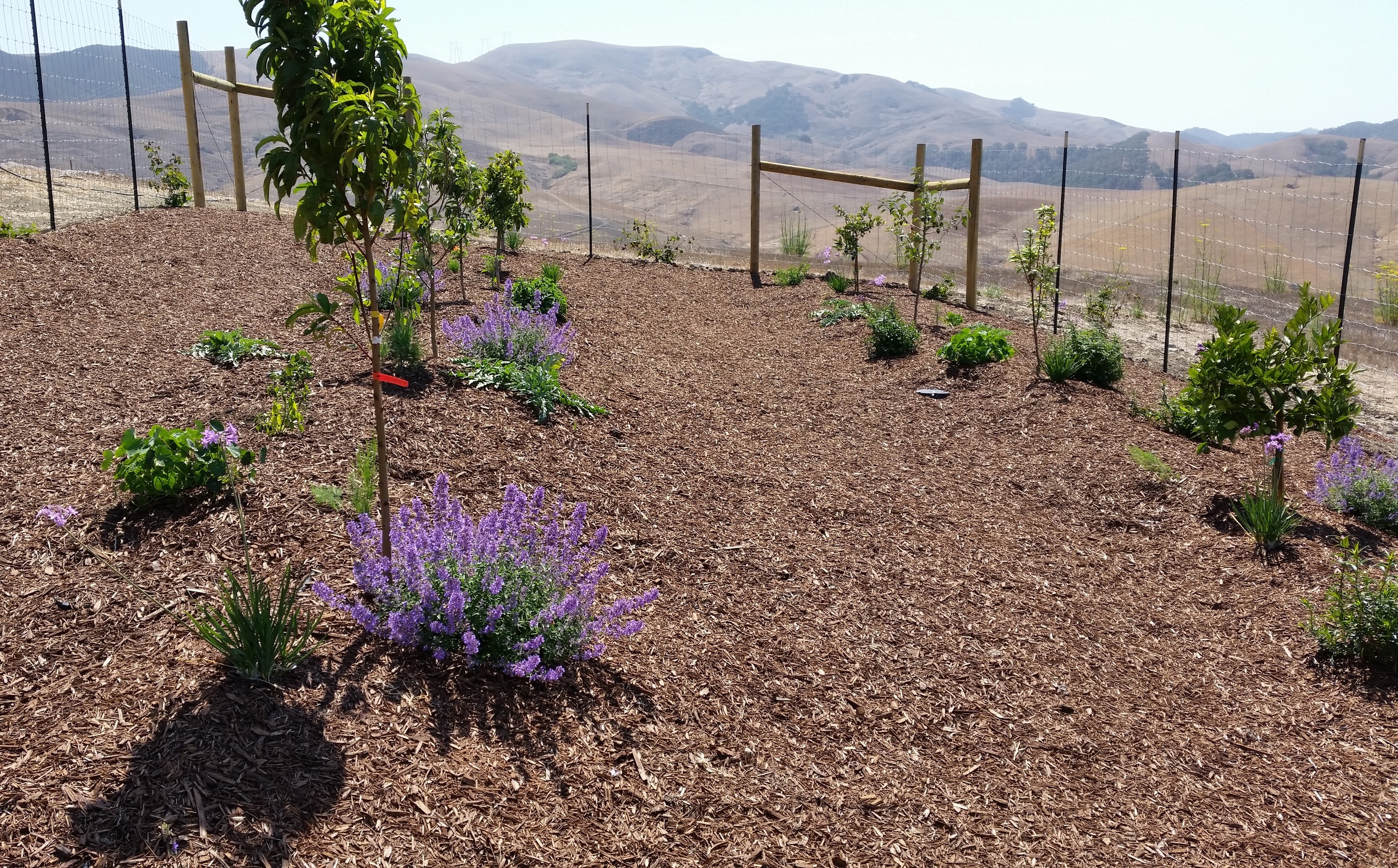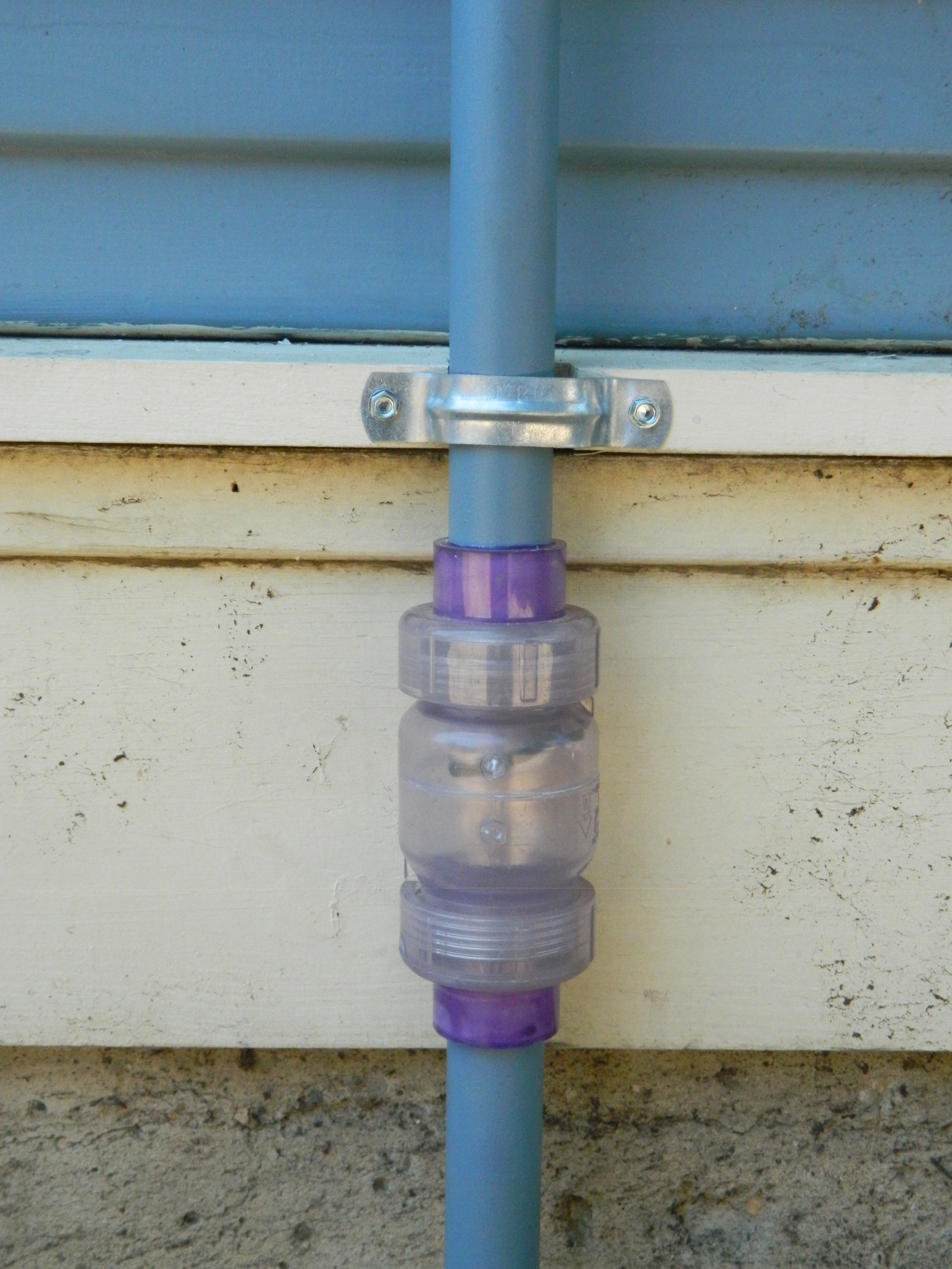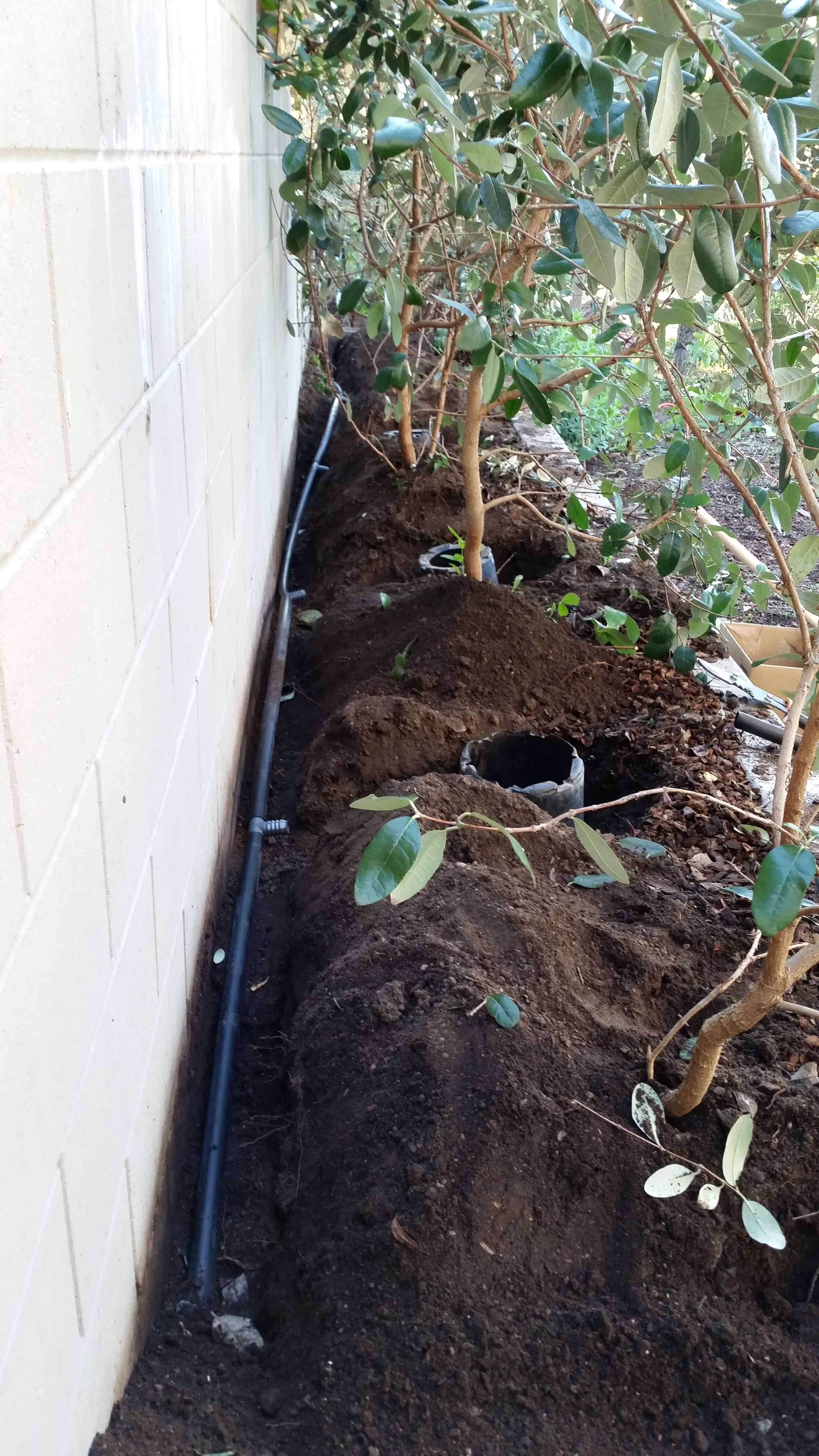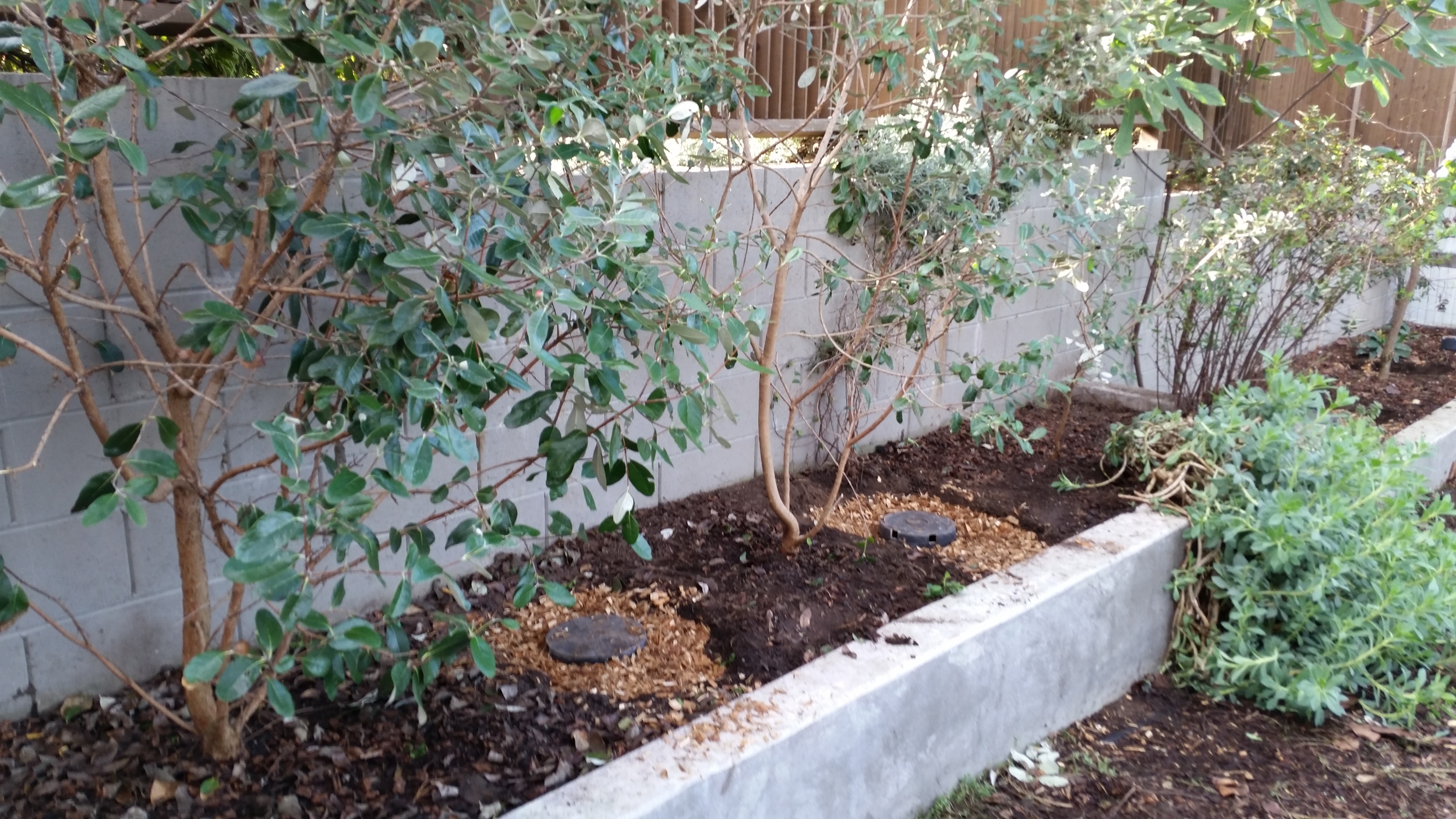By now most everyone in the Golden state has realized that we are running extremely low on our precious fresh water resources and more and more drastic measures are being taken as water companies big and small enact water usage restrictions to keep the taps flowing. Lawns everywhere are browning out and gardens beds are dying off. Nevertheless there is some relief to the situation in the form of rebate programs, smart irrigation technologies, and greywater and rainwater harvesting. The switch from overhead sprinklers to more efficient drip irrigation can save thousands of gallons of water per month in water use. Also installing a “smart” water timer with a weather based sensor or a greywater irrigation system will push the savings even higher.
Most local towns and cities have for several years now offered a cash rebate for lawn removal for homes and businesses. These “Lawn to Landscape” projects are great for California as it allows for low maintenance, drought tolerant flowering gardens to add more curb appeal and property value to our communities than a plain green or brown lawn ever could. Not to mention more much-needed beneficial habitat for birds, butterflies, and bees.
This is part of rain garden planting in Atascadero using California native trees, grasses, and flowers. It is designed to be irrigated by seasonal run-off, slow down storm water flows, and catch floating debris before the water overflows to a natural creek area below the property.
This 5000 gallon Bushman rain tank was installed to catch the roof run-off of a home in Cambria. It filled up this spring on 4” of rainfall alone and is the sole source of outdoor irrigation water used in the gardens. 1000 sq ft of roof top yields approx. 600 gallons of water to store per 1” of rain.
Josh Carmichael is the owner of Carmichael Environmental, a local landscape design & build firm located in San Luis Obispo. For more info on sustainable landscaping, water conservation techniques, or green building projects contact our office at (805) 544-3214, visit our website www.carmichaelenvironmental.com or follow us on Facebook today.


